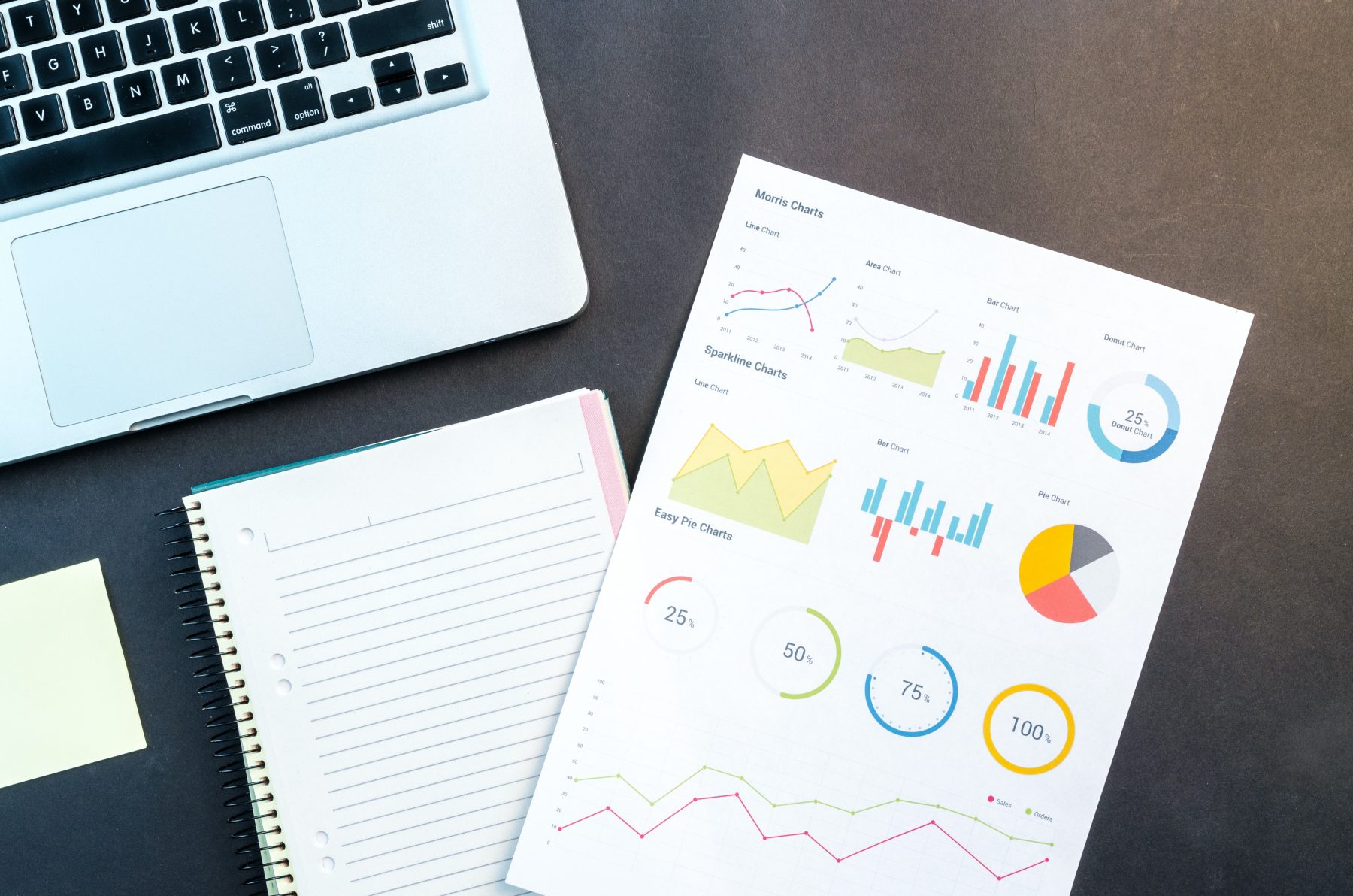
Many small business owners focus on generating more revenue every year, and that’s a wonderful goal. But not all revenue is created equally since some items are more profitable than others. If you sell more than one product or service in your business, then you may benefit from looking at your revenue mix.
While it’s fun to watch revenues grow, your business profit is what really matters. If your expenses grow faster than your profits, then you have a lot of activity going on, but you don’t get to keep as much of what you make.
An insightful exercise to try is to take a look at your revenue mix. Then you can ask “what if?” to optimize your profits.
Your Revenue Mix
Let’s say you offer three different services: Services J, K, and L. Your revenue pie looks like this:
J: $700K or 70% of the total
K: $150K or 15% of the total
L: $150K or 15% of the total
Total: $1.0 million
In this example, Service J is clearly the service making you the most revenue in your business. But is it making you the most profits?
The profit you receive from each of these service lines is as follows:
J: $80K
K: $10K loss
L: $30K
Total: $100K
While Service J is generating the most profit volume for your business, it’s actually Service L that’s the most profitable. Earning $80K on $700K yields an 11.4% return on Service J, but earning $30K on $150K yields nearly double the return at 20%. Service L generates the most return. And if possible, Service K may need to be discontinued or turned around.
Optimizing Profits
Your strategy for a more optimum revenue mix might be to sell as much of Service L as possible while eliminating or fixing the problem around Service K.
It’s fun to experiment with different revenue mixes. And of course, there are many more variables besides profit, such as:
- What services/products do you prefer to work on/sell?
- Are you able to sell more of the most profitable service or are there marketing limitations?
- Is one service a loss leader for the others?
- Are you able to adjust the price on the lower margin services to increase your profits?
There are many more questions to ask and strategies to consider to make you more money, which is why we love being accountants.
A New Mix
We hope you’ll spend some time analyzing your revenue mix and having fun asking yourself “what if?” If we can help you expedite the process or add our perspective, please reach out anytime.
If you keep any kind of digital information in your business, you have a chance of becoming a victim of a cybercrime. The odds have increased exponentially during the pandemic, with more cyberthreats and scams floating around than ever before. Here are some ways to reduce your chances of getting attacked.
Social Engineering
Social engineering is when thieves try to get your employees to provide confidential information via a phone call or email. You can reduce your risk here by developing procedures and training any employees that take customer phone calls for the business. Require them to ask for identifying information such as a pin or code, or simply prevent them from giving out any information over the phone.
Passwords
Passwords are terribly inconvenient but incredibly necessary. Almost everyone is guilty of using passwords that are simply too easy to guess. Here are some password tips:
- Avoid using dictionary words, even if the syllables are broken up in the password.
- Always use a combination of upper and lower case, and don’t just make the first letter uppercase which is too predictable.
- Include special characters, and don’t just use the exclamation point.
- Use separate passwords for everything, especially for banking apps, accounting apps, and social media apps which are frequently hacked.
- Make your passwords at least 12 characters. Better yet, utilize a password vault app to generate secure passwords.
Receiving and Delivering Information
If you deliver or receive information, it should be done safely and securely. One way to do this is to use a customer portal such ShareFile or SmartVault, where the information is securely stored in the cloud. Another tool to safeguard information delivery is encrypted email.
Anti-Virus
All computer users should have anti-virus software implemented and active on their devices, including tablets and cell phones as well. Company procedures should dictate the settings as well as the brand to use.
Spam Protection for Email
Anti-spam software is also necessary to protect the device from bad links in emails. Users should be trained to detect and avoid phishing emails.
Malware Protection
Malware can be installed on your computer without your knowledge and if you are not careful. To protect against these threats, avoid file-sharing when possible, be careful when visiting unknown websites, don’t download software that you don’t recognize, and be careful with links in emails.
You may also need to protect your website from malware attacks by installing a firewall or other preventative solutions.
Software Releases
Stay current with all of your software updates and upgrades. Updates and upgrades can patch vulnerabilities, so you are safer with each new installation.
Data in the Cloud
Make sure any data that you have in the cloud is behind an acceptably secure technology solution. Today, this generally means files are stored with AES 256-bit encryption. You can also look for SOC1 and SOC2 certifications.
Need to Know
There are many policies that need to be developed for employees with regard to data handling. One example is providing data access to employees on a need-to-know basis. For example, an operations manager does not need the password to the payroll system, but the payroll manager does.
Reducing Business Risk
These items above are the tip of the iceberg when it comes to having good data security practices in your business. Develop an excellent set of policies, train and monitor employees, and set a great example yourself when it comes to this growing threat to your business.
 A great way to start 2021 is to take a fresh look at your business finances. Many things changed in 2020, and if you are in the habit of spending on the same items year after year, it’s the perfect time to decide what is essential and what can go.
A great way to start 2021 is to take a fresh look at your business finances. Many things changed in 2020, and if you are in the habit of spending on the same items year after year, it’s the perfect time to decide what is essential and what can go.
There are only a few ways to increase profits when you think about it in black and white terms. You can either raise revenues or cut costs. Let’s take a look at where we can potentially cut costs.
Publications
These expenses tend to be monthly or yearly, and we tend to just let them automatically renew time after time. But do we really need them? Take a look in your Dues and Subscriptions account to evaluate what you really need to stay informed, and cancel the rest.
Memberships
If you are a member of an organization or two, what benefits are you getting from your investment? Does it raise revenue for you? Do you use everything the membership offers? If not, it might need to go on the chopping block.
Memberships are especially tricky if the organization provides a local meeting component as a benefit and your state or county has been shut down. There’s a tradeoff right now between supporting the organization so that it’s still there when we can freely meet again and being responsible about your own business costs.
Office/Store Rent
With many employees working from home, the question has come up in many businesses about how much space they really need. As leases expire, consider how much space you really need. Some employees may love to work from home permanently, which frees up space.
Retail stores that have moved their business online may be able to cut back on customer-facing space but might need more inventory storage space. A restaurant that has successfully transitioned to pickup and delivery orders might be able to get by with a smaller seating area.
Software Apps
Are you paying for any technology applications that you are simply not using? This is a good place to look for cuts.
Some applications charge by number of contacts. Keeping your lists clean inside these apps will avoid increases and cut costs in some cases.
Office Supplies
Do you really still need things like staplers and scissors on everyone’s desk? If your business is going paperless, you can save a lot on office supplies.
Printing
Do you need to spend money on printing, or can the printed item be delivered electronically?
Shipping/Postage
While information can be delivered electronically, physical goods still need to be shipped. Make sure you have the best deal with your shipping vendors based on your volume. You may also need to consider building your shipping costs into the price of the product or add a shipping fee to the bill if you don’t already.
Marketing
A great way to increase profits is to become more intentional about your marketing costs. Are you able to measure what’s working and what isn’t? Or are you doing the same thing year after year?
Marketing has changed so much, even in the last few years. It might be time to implement digital marketing methods, which can be more cost-effective than older, outdated methods.
Labor
Make sure employees manage their time effectively by providing the right training and supervision. This should help to reduce labor expenses.
Telephone/Internet
Has your business changed? Do you need all those extra features you are paying for? Could you do without those extra lines? Would another phone plan save you money on long distance or international calls? Many telecommunication companies will often bargain with you or offer you a new deal just for checking in with them.
This gives you ten places to look to cut costs and correspondingly increase profits for 2021. If you need help reviewing your income statement, please reach out.
Qualifying small businesses can now apply for Paycheck Protection Program (PPP) loans through certain lenders. The Small Business Administration (SBA) reopened its PPP portal on January 11, 2021 after Congress passed and the President signed legislation in December 2020, authorizing the continuation of the program and an additional $284 billion in funds.
The program allows for two types of applications:
- First Draw Loans to qualifying entities that did not receive a PPP loan in 2020, and
- Second Draw Loans for previous PPP loan recipients and with a narrower set of qualifications.
First Draw PPP Loans for First-Time Borrowers
Borrowers that qualify for first-draw PPP loans can apply for up to 2.5 times their average monthly payroll costs (with caps), for a maximum loan amount of $10 million. Generally speaking, the applicants must have been in operation on February 15, 2020 and be among the following types of businesses:
- Businesses with 500 or fewer employees that are eligible for other SBA 7(a) loans
- Sole proprietors, some self-employed individuals, and independent contractors
- Nonprofits, including churches
- Sec. 501(c)(6) businesses
- Food or lodging operations with NAICS codes that start with 72 and with fewer than 500 employees per location
- Certain news operations with qualifying NAICS codes in the 51 range
A number of entities are specifically prohibited from receiving loans.
The SBA application for First Draw Loans is here:
https://www.sba.gov/document/sba-form-2483-ppp-first-draw-borrower-application-form
The applicant must attest to the necessity of the loan, among several other declarations.
Second Draw PPP Loans for Borrowers That Received a PPP Loan in 2020
Borrowers that qualify for a second-draw PPP loan can apply for up to 2.5* times their average monthly payroll costs (with caps), for a maximum loan amount of $2 million. Generally speaking, the applicants must qualify as follows:
- Employ no more than 300 employees
- Have spent all of their first PPP loan on eligible expenses
- Do not have to apply for forgiveness for the first loan ahead of receiving the second loan
- Can show a 25 percent drop in gross receipts in any one 2020 calendar quarter from 2019. If it’s easier to show a 25 percent drop for the entire 2020 year compared to 2019, applicants can submit their tax returns as proof.
*Companies with NAICS code 72, which generally speaking are food and lodging operations, can borrow up to 3.5 times their average monthly payroll costs (with caps).
The SBA application for Second Draw Loans is here:
https://www.sba.gov/document/sba-form-2483-sd-ppp-second-draw-borrower-application-form
The applicant must attest to the necessity of the loan, among multiple other certifications and declarations.
Loan Forgiveness
PPP loan recipients can apply to have PPP loans forgiven if the funds are used within a specified covered period from 8 to 24 weeks on the following eligible costs: payroll (60 percent of funds), rent, covered worker protection and facility modification expenditures, covered property damage costs, certain supplier costs, accounting (!) expenses, and a handful of other qualifying expenses.
Timing
The SBA portal opened Monday, January 11, 2021 for first-draw loans by lenders (about 10 percent) that cater to underserved communities. These include Community Development Financial Institutions (CDFIs), Minority Depository Institutions (MDIs), Certified Development Companies (CDCs) and Microloan Intermediaries.
On Wednesday, January 13, 2021, the SBA application portal began accepting applications for Second Draw loans. A few days later, additional lenders will be added to the portals.
SBA says it “plans to dedicate specific times to process and assist the smallest PPP lenders with loan applications from eligible small businesses.”
What to Do Next
Here are some suggested steps to get ready for this next round of PPP funds.
- Determine which lender you want to use to apply for PPP funds.
- Visit your lender website to see if they have a PPP notification signup so you can get notified of updates.
- Collect the documents you need for the application.
a. Payroll summary reports
b. Profit and loss statements
c. Tax returns - Begin calculating the amounts you’ll need for the application:
a. Gross receipts by quarter for 2020 and 2019
b. Average monthly payroll costs, including cap limits for wages over $100,000, for the year you want to use (2020, 2019, or the year from the application date) - Contact us if you need help with documentation or calculation or other advice.
- Contact your tax preparer about tax ramifications.
- Contact your attorney to evaluate the loan agreement.
Further PPP Resources
Updated PPP Lender forms, guidance, and resources are available at www.sba.gov/ppp.
CARES Act Treasury page: https://home.treasury.gov/policy-issues/cares/assistance-for-small-businesses
Jan 6, 2021 SBA PPP Interim Final Rule – 82 pages
https://home.treasury.gov/system/files/136/PPP-IFR-Paycheck-Protection-Program-as-Amended-by-Economic-Aid-Act.pdf
Jan 6, 2021 SBA PPP Second Draw Interim Final Rule – 42 pages
https://home.treasury.gov/system/files/136/PPP-IFR-Second-Draw-Loans.pdf

A cashless business is one that processes all cash transactions electronically. There is no paper or coin money taken or handled. While no one society has become 100 percent cashless yet, most organizations are moving in that direction.
A business can become cash-free by providing multiple electronic alternatives to payment. Credit cards are the most common electronic payment implementation. This option most likely includes MasterCard, Visa, Discover, and American Express. Some businesses also have a PayPal account and offer that method for payments. Venmo, owned by PayPal, is an efficient mobile alternative, but it is mostly used for consumer-to-consumer transactions. And there is also cryptocurrency.
Cashless businesses are more efficient, help to reduce crime, and have a better audit trail of transactions. Going cash-free also saves money and time spent counting the money, storing the money, safeguarding the money, protecting employees at risk of becoming theft victims, and physically going to the bank.
On the negative side, credit card companies charge fees to merchants, although these can now be passed to the customer in most states. Electronic transactions also require a higher level of technology, and privacy is reduced. And while security is an issue, all merchants that take credit cards must comply with PCI (Payment Card Industry) security standards and sign a document each year stating so.
If your clientele does not keep their money in a bank or if they are not able (or have chosen not) to have a credit card, you may need to rethink going cashless. About 20 percent of U.S. households are challenged when it comes to having access to checking and savings accounts. This has led to several state and local laws being passed in the U.S. prohibiting a business from going cashless. Nothing has been passed at the national level as of this writing, however the Payment Choice Act was introduced in both chambers in mid-2020.
The pandemic has accelerated the move to cashless with the desire for contactless transactions. Several countries are leading the way to becoming cash-free as an entire country, including Sweden, Finland, Norway, China, and South Korea. Sweden’s government has been the most aggressive, claiming they will become a 100 percent cashless society by 2023.
Is going cashless right for you? Meeting your customers’ needs is a prime consideration. At the very least, you can move to increase the percentage of electronic transactions and decrease the percentage of cash transactions when feasible. This measure will save time and money in and of itself.
The Consolidated Appropriations Act, 2021 (CAA 2021) became law on December 27, 2020, and among many other things, provided for a second round of potentially forgivable Paycheck Protection Program loans to small businesses that were financially impacted by the effects of the pandemic.
The Act not only provides funds and guidelines for a round two of PPP money; it also expands PPP round one in a number of ways. Here are a few of the highlights.
Changes to PPP Round 1 Loans
Existing borrowers with PPP loans can reapply for a loan or request a loan increase as long as they have not received forgiveness. This includes borrowers that returned all or part of their PPP loan or whose loan maximum has increased due to regulations implemented after receipt of their loan.
Businesses that have not been granted forgiveness can spend PPP money and apply for forgiveness on an expanded list of expenses, including:
- Software, cloud computing, HR, and accounting
- Property damage
- Supplier costs
- Essential contracts in force prior to loan
- Worker protections, e.g. PPE
- Payroll costs can include group insurance including group life, disability, vision, dental
They can now choose their covered period at any time between 8 and 24 weeks (previously it was 8 OR 24 weeks only).
There will be a simplified forgiveness application for loans under $150,000. However, do note that this is not the rumored rubber stamp: the backup paperwork and calculations are still required.
The SBA has until January 21, 2021 to establish the guidelines for the application process.
PPP Second Draw Loans
Additional PPP monies will be available to qualifying businesses, up to loan amounts of $2 million. The business must:
- Employ 300 or fewer employees
- Have used or plan to use the full amount of PPP1
- Can prove a 25 percent drop in revenue in any quarter of 2020 compared to 2019
Businesses, certain non-profit organizations, housing cooperatives, veterans’ organizations, tribal businesses, self-employed individuals, sole proprietors, independent contractors, and small agricultural co-operatives are eligible.
In round two, borrowers may receive a loan amount of up to 2.5X the average monthly payroll costs in the one year prior to the loan or the calendar year. Businesses with NAICS code 72 (Accommodation and Food Services) may receive loans of up to 3.5X average monthly payroll costs. The rules for forgiveness are the same as in round one.
Organizations not eligible for PPP2 include:
- Businesses not in operation on Feb 15, 2020
- Businesses that received a Shuttered Venue Operator Grant
- Entities normally ineligible for SBA loans in general, except for nonprofits and religious organizations
- Political organizations and lobbyists
- Entities affiliated with entities in the People’s Republic of China
- Registrants under the Foreign Agents Registration Act
- Publicly traded companies
The entire program is extended to March 31, 2021.
There are also special provisions for these types of businesses:
- Venues
- Farmers and Ranchers
- Housing Cooperatives
- News Organizations
- 501(c)(6) and Destination Marketing Organizations
- Businesses in bankruptcy proceedings
The disclosures have also gotten stronger, with specific provisions for collection of demographic information and required disclosures for leaders in government to publicize their receipt of PPP forgiveness as well as prohibition of them receiving PPP loans in the future.
The law gives SBA a deadline to act, which varies from 10-24 days depending on the section. The next course of action for businesses that want to apply for these funds is:
- Continue gathering your documents,
- Make your calculations,
- Check with your accountant if you need help,
- Select your SBA-approved bank, and
- Wait for both
- The SBA guidance and
- Your bank to open the application portal
The Economic Aid to Hard-Hit Small Businesses, Nonprofits, and Venues Act starts on page 2042 of the 5593-page bill in case you want to see for yourself. And if not, know we’re here as your tax law interpreter, so feel free to reach out anytime.
One of the biggest tax issues of 2020 has been clarified with the signing of the Consolidated Appropriations Act, 2021, (CAA 2021), and that was whether expenses that are normally deductible and that were paid with the proceeds of a Paycheck Protection Program (PPP) loan that is forgiven are truly deductible.
The CARES Act, which became law on March 27, 2020, was drafted so quickly that the question of deductibility was left out, but several members of Congress made it clear that deductibility was the intent all along. The IRS went the other way, publishing a notice (2020-32), a revenue ruling (2020-27), and a revenue procedure (2020-51), that took the opposite stance: PPP-related expenses that were forgiven were not deductible, therefore potentially causing business’s taxes to become much higher.
Congress has now reversed the IRS’s position with CAA 2021 in Section 276 (PPP) and 278 (EIDL). Gross income does not include forgiveness of PPP loans and emergency EIDL grants. Deductions are allowed for normally deductible expenses paid with PPP loan proceeds that were forgiven. It also provides deductibility for Second Draw PPP loans. This is all good news for taxpayers with PPP loans.
However, there could be timing issues that could reduce the deductibility of the full amount of the PPP expenses. There could also be amounts “at risk,” which is a tax term that limits your deductions in certain cases.
All of these issues need to be carefully considered on a case-by-case basis. Your tax professional is your best source to help you review all of these factors so that both your PPP loan forgiveness and allowable deductions are timed to reduce your tax bill.

The 13-Week Cash Flow Forecast
If you’re having ups and downs in your cash balance, the 13-week cash flow forecast is the perfect tool to help gain clarity around your cash needs. It will help a business owner predict what their cash balance will be 13 weeks (one calendar quarter) in the future.
The forecast calculations start with entering cash receipts and cash disbursements into a spreadsheet. Start with actual spending and receipts for the first week, then use estimates for the remaining weeks. Include planned expenditures such as overhead, payroll, and loan payments. Add in inventory purchases. Project your receipts based on history or recent changes in your business.
Once you’ve completed your forecast, you can make changes and do what-if scenario planning. For example, if the forecast shows that you will run out of cash in week seven, you have some time to decide what you need to do to remedy the shortfall. Options might be:
- Accelerate the collection of your receivables.
- Dip into your line of credit to cover a portion the shortfall.
- Furlough some of your workers.
Plug your selected scenario into the forecast to see how much that relieves your shortfall.
The benefits of creating a 13-week cash flow forecast are many. You can see what actions need to be taken and when to take them well ahead of time. You can also see how much of an action you need to take. For example, instead of furloughing 50 percent of your staff, you may only need to furlough 25 percent. Or instead of borrowing $50,000, you might only need $20,000.
The cash flow forecast can also save time when developing your annual budget. Budgets are especially useful when business conditions are volatile or when business owners need all the clarity they can get.
Try your hand creating a 13-week cash flow forecast for your business, or reach out to us for help any time.

At the beginning of 2020, developing a business continuity plan may not have been a top priority. Or maybe you thought it was only for large businesses. Fast forward to today, and a business continuity plan has become an essential staple in business planning.
There are more business risks than ever before to consider that can affect business continuity. Businesses are being shuttered, reopened and shuttered again from the pandemic, fires, hurricanes and damage from riots, just to mention a few of the more common issues in this unusual year.
The biggest benefit of a business continuity plan is the process of developing it. It helps you think through the steps you should take if a business interruption occurs. If you have a disaster recovery plan – or even a few steps jotted down of what you’d do – then you have already started a portion of the process.
Here are some of the major pieces of a business continuity plan to consider developing for your business.
Roles and Responsibilities
In this section, the business stakeholders should be identified and listed. On a high level, questions like these should be answered:
- What is each person’s role within the company, and how would that change if the business is interrupted?
- What new skillsets should be acquired in the case of a disruption?
Potential Impacts to Your Business
This part of the continuity plan lists major scenarios where something could go wrong with your business. It should include things like weather events, fire, riots, theft, leadership interruptions, cash flow shortages, and the long-term impact of the pandemic. For each event, an analysis should be made as to how it will affect the business and what possible outcomes could occur. This part is also called a Business Impact Analysis.
Recovery Strategies
Once you’ve identified impacts, the next set of questions covers how to most effectively recover from them. These remedies might include seeking additional financing, selecting backup locations, checking IT department functionality, creating alternate supply chain and distribution sources, and identifying many more actions along these lines.
As we’ve seen this year, this is just as important to think through for small businesses as it is large businesses.
When owners and employees are not in the middle of an actual disaster, they can better map out a recovery strategy that’s optimal and cost-effective for the business.
Implementation
A good plan should be implemented through distribution, testing, and training. All stakeholders should read and understand the contents of the business continuity plan. The plan should be tested in drills and exercises when possible. Employees should be trained so they know their part and feel comfortable carrying it out if under high stress.
The long-term viability of your business is important, and it can be strengthened when you put a business continuity plan in place. If we can help, feel free to reach out any time.

You no longer need professionals to create quality videos. Video creation has gotten so easy that anyone can do it with the right tools. Many smartphones can take quality video, and the best news is you don’t need expensive video editing software. All you need is an app and your imagination.
There are many reasons to create a video:
- Web pages that include video rank higher than those that don’t have video
- Because people love to watch video, videos will often reach more people than text articles
- Video is often the best way to educate people
- Your message comes more alive when you use more senses: sight and sound
The first step is to figure out what you want to say. Here are some video topic ideas for your business:
- A customer service tip
- Your company mission, vision, and values
- Your company’s origin story
- Behind the scenes look into a production process
- An event, sale, or service promotion
- An employee spotlight
- A customer spotlight
- A product spotlight
- A how-to
- A deadline reminder
- A new product or service announcement
The next thing you need is a rough script of what you want the video to say, as well as graphics you can use to illustrate your points.
The final thing you need is a video creation app. Consider using InShot for easy yet comprehensive mobile video editing. When searching for video editing apps on your phone, there are free and paid plans to choose from. Other popular video apps include Adobe Express and Magisto.
With most video apps, you have hundreds of templates you can choose from to help you get started. You can easily replace your text, graphics, and sound with your own items, or ones that the software provides.
Have a favorite video editing app? Let us know!
Don’t be afraid to try your hand at video creation. It’s an easy way to impress your customers.
 New Business Direction LLC
New Business Direction LLC